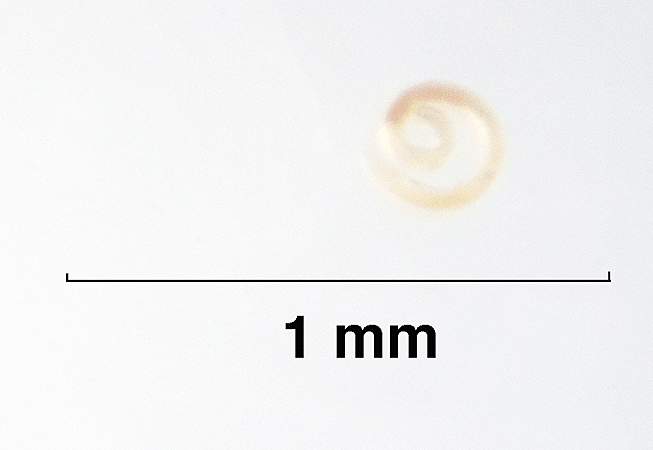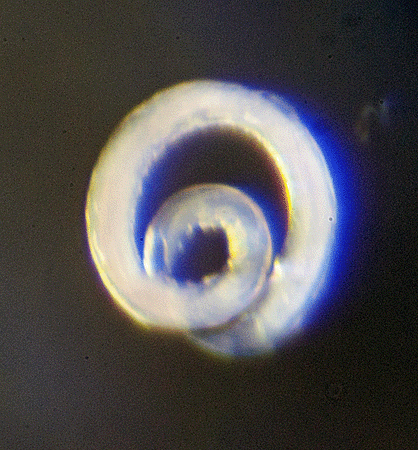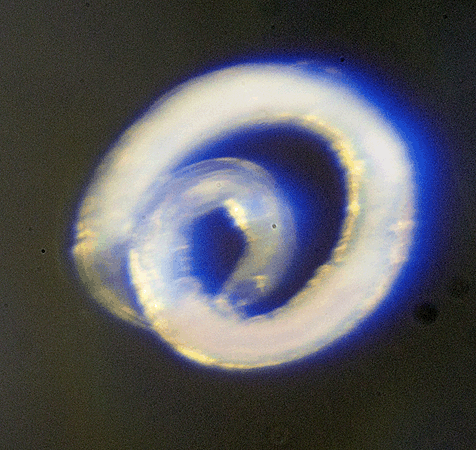Phylum Nematoda / Phylum Nemata (Roundworms / Threadworms) in the Christopher B. Smith Preserve
Nematode Characteristics: The word Nematoda comes from the Greek words nematos, meaning "thread", and eidos, meaning "form." Nematodes are the most numerous of all multicellular animals on Earth. Nearly 20,000 species have been described; the total estimated species number is 1 million. Roundworms range in length from .3 mm to over 8 m.
Nematodes have unsegmented, elongate, cylindrical bodies with digestive, nervous, excretory, and reproductive systems. They lack distinct circulatory and respiratory systems. Males are usually smaller than females. All species of nematodes lay eggs. Reproduction can be cross-fertilization (common in most), or hermaphroditism, or parthenogenesis.
Many roundworms are parasites of insects and other animals, or plants; some are free-living and feed on bacteria, fungi, and other nematodes.
Interactions in the Smith Preserve: Nematodes living in soil help decompose organic matter and produce humus. They cycle nutrients and energy.
Many nematodes are in symbiotic relationships with plants and animals, and function as nitrogen fixers and gut microbes. They are an important part of the food web.
Class |
Order |
Family |
Species Name |
Common Name |
Unknown |
Unknown |
Unknown |
Unknown |
Unknown Class, Order, Family Unknown Species ... Roundworm
|

 On March 22, 2016, this very tiny roundworm was living in leaf litter beneath a
On March 22, 2016, this very tiny roundworm was living in leaf litter beneath a 
